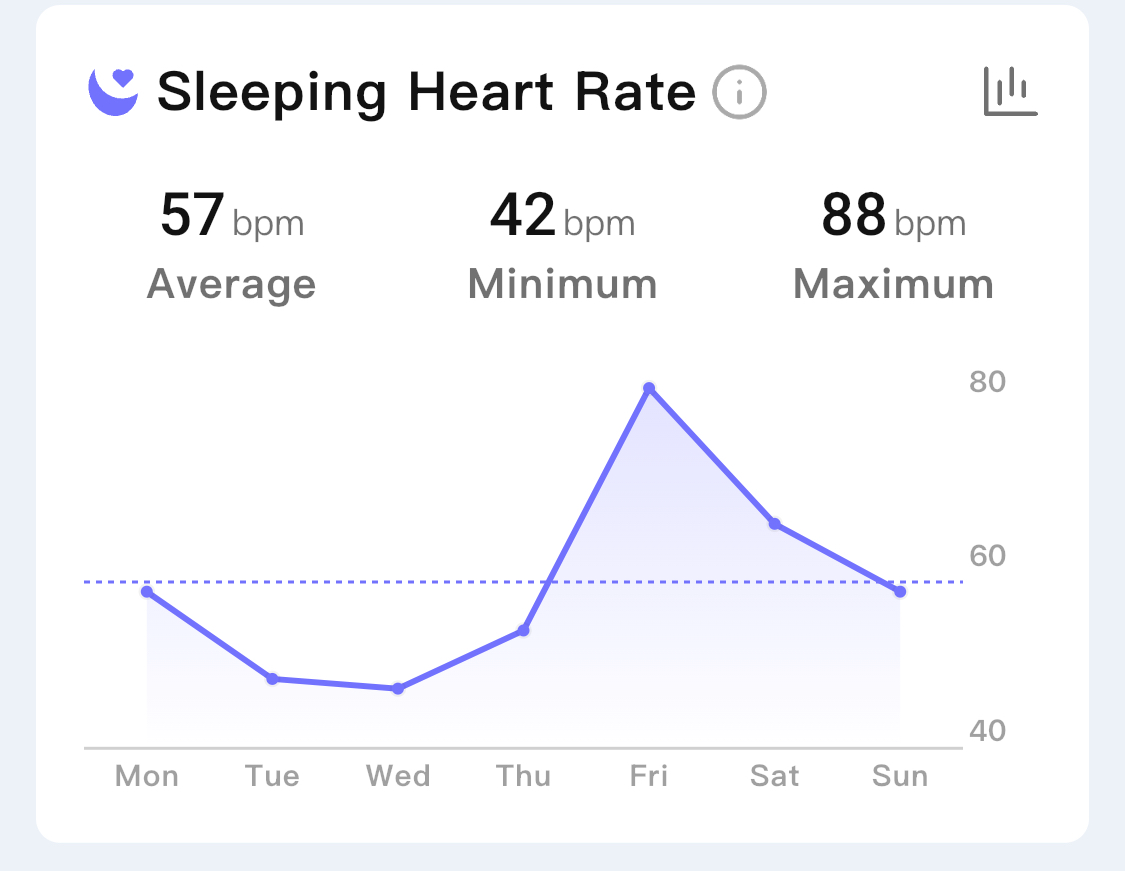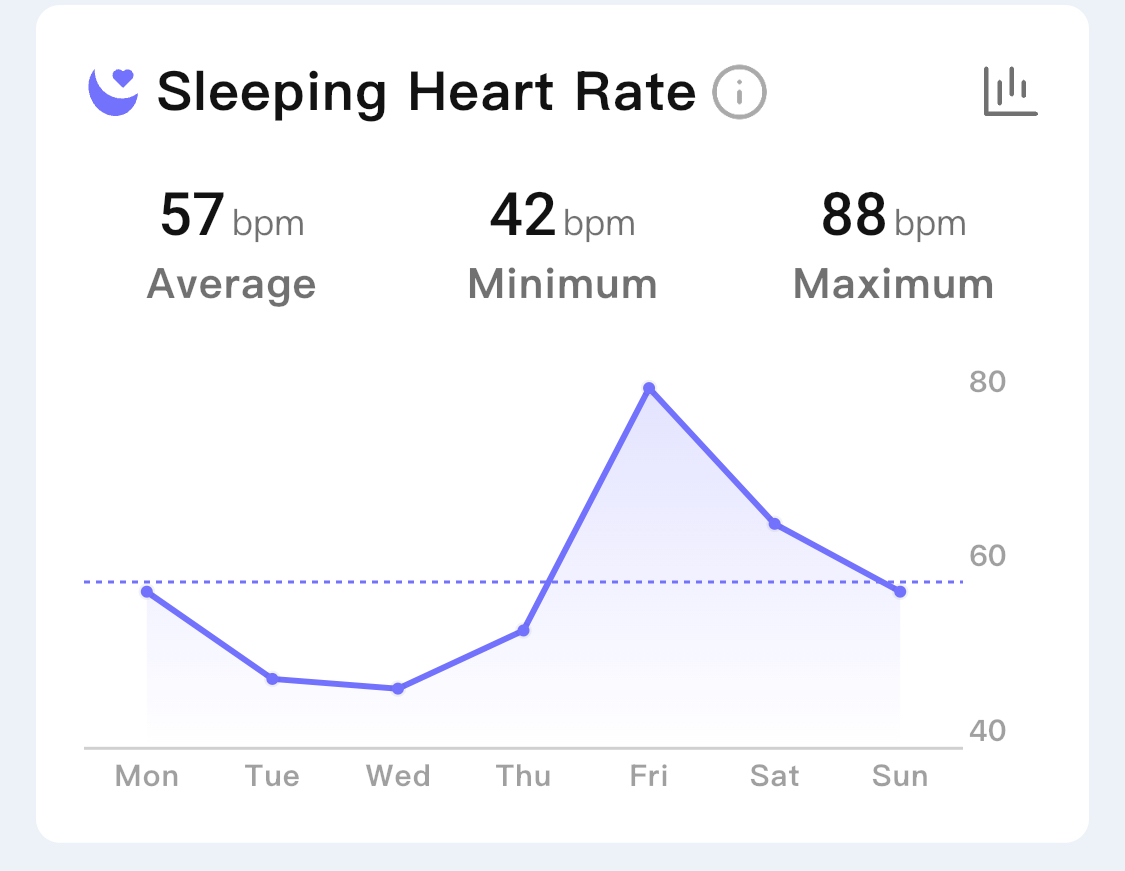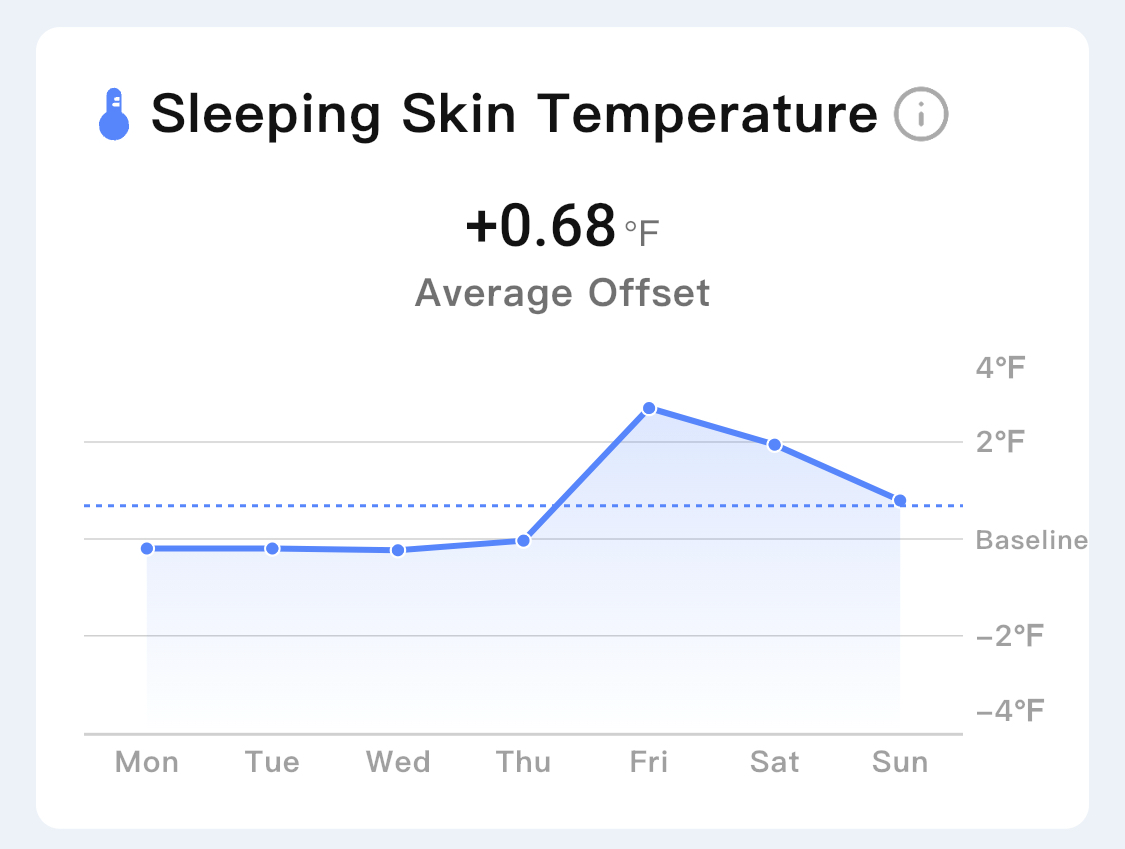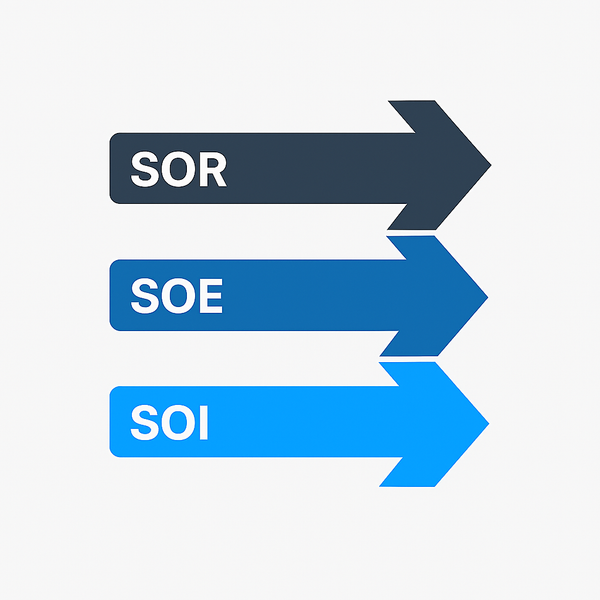Quantifying My Health
When Data Reveals the "Why"

I've been “quantifying” my health for a long time - combining my personal passion for fitness with my professional interests in data and analytics. I bought the first-gen Fitbit when it truly was a "bit"—a teardrop-shaped motion detector that came with a little pouch to carry in your pocket (and a cable to sync with your phone). I've also worn an Apple Watch since V1, and I've used the iPhone app Sleep Cycle for ages, which analyzes ambient noise and does a pretty good job of telling me how I slept, but was never able to tell me much about why.
When I decided to add a smart ring to my collection of wearables, I chose a Ringconn over the more popular and well-known Oura Ring because the Ringconn seemed more complementary to rather than competitive with my Apple Watch, and also more focused on sleep, the one area where the Apple Watch (and its short battery life) falls short.
So far I’m really enjoying the RingConn - adding this new data source to my existing “ecosystem” of wearables finally started providing answers to some "why" questions that had eluded me for so long. I knew, for instance, that I didn't sleep as well after drinking alcohol. What I didn't know was why.
The Heart of the Matter
A revelation came within days of wearing the ring. The data was crystal clear - my sleeping heart rate was significantly higher after drinking. Without alcohol, my average was in the low-40’s. With alcohol - mid-to-high 50’s (and that’s for modest-to-moderate consumption).
This explained everything. Why I had no trouble falling asleep after a glass (or 2) of Malbec or a well-crafted Old Fashioned (two of life's great if guilty pleasures), but why I'd consistently wake up at 4 or 5 AM, alert and unable to return to sleep. My body was working overtime all night, even if my mind felt relaxed.
A Tale of Two Cities (and Altitudes)
This newfound insight was put to another test during last weekend’s visit with my son in Denver. Between the beers (Coors of course) we enjoyed at the Rockies/Mets game and the Japanese Old Fashioneds we had at a great local sushi bar, combined with Denver's mile-high altitude and a Sunday morning hike, the data painted a clear picture: my heart rate was elevated even more than usual. Not surprisingly - altitude plus (post)-alcohol equals a cardiovascular double-whammy.
But the real - and unexpected - insights came after my flight home.
When Data Becomes Diagnosis
I noticed while boarding my return flight that the passenger behind me was coughing heavily - but being the seasoned traveler I am - I put on my noise-cancelling headphones and drowned it out for the flight. In hindsight, it seems pretty apparent that's how I picked up what turned out to be COVID. By mid-week, I started feeling under the weather, and sure enough, by the end of the week I was clearly positive - as revealed by a self-test Friday morning.
But by looking at the data - I already knew. In addition to my stuffy nose (which I originally - and incorrectly - attributed to pollen), my sleeping heart rate shot up more than 20 points(!) above baseline, and my skin temperature spiked as well.


In other words, the data not only confirmed what I was feeling but quantified it in ways that helped me understand the severity and track my recovery. As I write this on Sunday morning, I’m just about there (although according to this morning’s followup self-test - I’m still positive, albeit feeling much better).
The Long Road to the "Why"
This is just one small example of how data and analytics can create powerful opportunities for not just businesses - but also for self-understanding. Years of data collection through my various devices and apps had given me plenty of "what" information—I knew my step counts, my sleep duration, my movement patterns. But the "why" continues to improve. And of course, having data is one thing; knowing what to do with it is another entirely.
Will this newfound knowledge prevent me from getting sick? Perhaps not—viruses are remarkably democratic in their distribution - and by the time you’re aware you were exposed, it’s too late to do much about it. In retrospect, the one move that could have changed this week’s trajectory was changing my seat on the flight home, though with the flight nearly full that would have been difficult if not impossible.
Will data stop me from enjoying an occasional wine or bourbon? Definitely not—some of life's pleasures are worth the trade-offs.
But what data does provide is the power of informed decision-making. When I choose to have that glass of wine, I now understand exactly what I will be trading off the next morning. When I feel under the weather, I have objective data to help guide my decisions about rest, medication, and recovery.
The Quantified Self Revolution
There's something profound and powerful happening in the intersection of personal technology and self-awareness. We're moving beyond the era of "I think" and "I feel" into the realm of "I know" because "the data shows." I’ve spent much of my career studying how better information leads to better business decisions, and it’s nice to be able to apply those concepts more personally.
Looking Forward
As I write this, still recovering from my viral “souvenir”, I can’t help but think ahead to more uses of personal data. What happens to my body during periods of high stress? (the Ringconn also has a nice “stress” metric - based on heart-rate variability - that I’ve started to look at more deeply). How do different types of exercise affect my recovery? What's the optimal balance between social enjoyment and physiological cost?
Experience has taught me that more data leads to better insights, which enable better decisions. The technology for understanding our health - and our selves - continues to improve rapidly, and while I've been tracking myself for years, we're just getting started as a society in terms of what's possible when we combine personal interest in good health with the power of data analytics.
The data, as it turns out, really does tell the story. And the story keeps getting richer.




